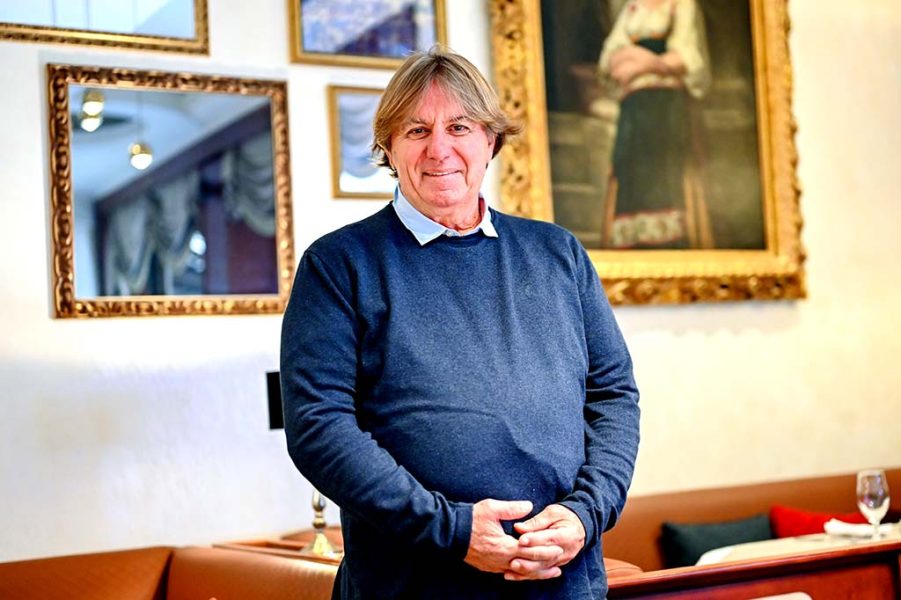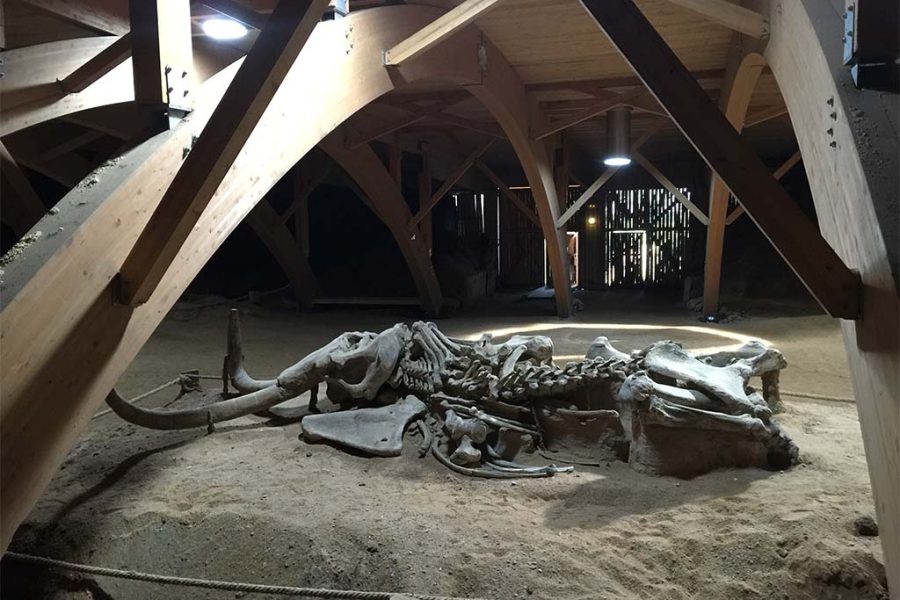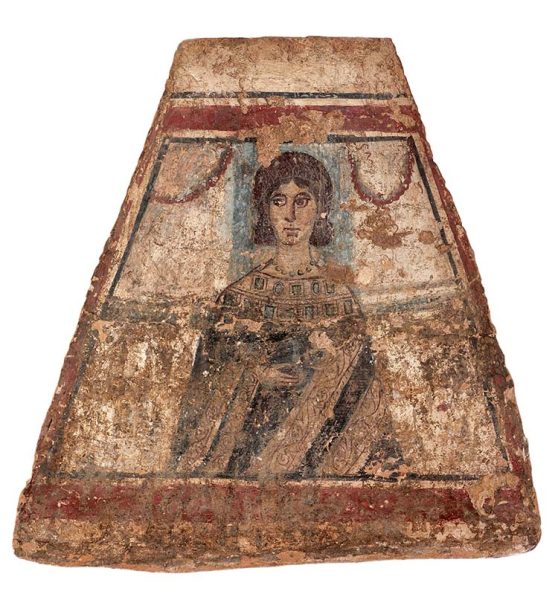This researcher of global renown claims that the area between the Alps and the Carpathians is one of the planet’s most creative territories. He spent more than 40 years working at Serbia’s Viminacium archaeological site, which he helped to put on the archaeological map of the world. He says that nothing has changed since the Neolithic Revolution, aka the First Agricultural Revolution, of 4000-5000 BC. It was then that the family unit became the basic nucleus around which everything is based. And now we’re at the start of a period during which cloning will bring a new age of civilisation
The Viminacium site is located close to the modern city of Požarevac. The major city of Viminacium originally emerged in the first century AD, during the reign of Emperor Hadrian, and remained inhabited until the early 7th century. More than 14,000 Roman tombs have been excavated at the site over recent decades, containing more than 200,000 objects, almost 2,000 of which were made of gold and silver. More than a dozen of them have been deemed priceless and declared as belonging to world cultural heritage. And the greatest credit for this belongs to Dr Miomir Korać (born 1952) and his team of associates.
This interesting scientist gained the nickname of Indiana Jones long ago, in response to which he admits: “I like Indiana Jones, but he is just nice fiction. Archaeology is a science that moves in a different direction. It is an expensive science, time-consuming, and it is very important where you place so-called probes, in order for them to be as close as possible to the object being sought.”
Anyone who has ever toured Viminacium and been hosted and guided by Miško, as he is known to everyone, has been truly fortunate. And the author of this article is among those lucky ones. In a desire to present him as accurately as possible to CorD readers, I took him back to his earliest childhood memories.
Viminacium was bigger than Pompeii by a third. However, unlike us, the Italians have already been excavating that city for 300 years
“My childhood is one that everyone would desire. In a Montenegrin family, after three girls, I was the fourth child and the first boy. Alongside my three sisters, my feet never touched the ground. And my parents only asked one thing of me: to study!”
And his parents were Montenegrins – his father hailed from the area around the town of Berane, from the mountainous part, but he was atypical because he didn’t nurture the cult of a male successor, but rather gave all his children equal attention. As a military economist, he changed 39 garrisons, which is how his son Miomir ended up being born in the Kosovo town of Gjilan. He wasn’t even six months old when they moved to Kragujevac, and subsequently to Belgrade. He has never returned to Gjilan, which he remembers only through stories, but he believes that he’ll visit it again one day. His mother was originally from the tranquil Zeta valley, and Miško thinks that he’s reconciled that which was impetuous and serene in his parents.
“I was a good pupil; I studied diligently throughout my schooling. After completing the Second Belgrade Gymnasium High School, I was supposed to fulfil their expectations. And they, like the majority of parents, wanted their son to be a doctor, to be able to treat them when they became elderly. However, they instilled in me a love for art, for architecture, for antiquities. That’s because they took us to visit cultural monuments when we were children, they had all the publications of the Serbian Literary Cooperative in the house and, in a way, they channelled me towards the other side. I remained indebted to them because I didn’t fulfil their wishes, but that debt was repaid by my daughter, Nina, who has completed medical studies and is a doctor. Her and my son Vanja each gifted me a grandchild: Pavle and Sara. I’m really a lucky man to have them all.”

He has spent more than 40 years married to Ana, a librarian who moved from Belgrade’s Professor’s Colony to New Belgrade.
“We were students when we met, wed and received our son, Vanya, who earned his doctorate and works at the Mathematical Institute. Those student days were also the first years of our married life, the years of our biggest sacrifices. In the evenings, when you put the child to bed and your heart sleeps, you have to study. It’s only today that I have time to head down to the neighbourhood café with Ana each morning, and to start our day in the most beautiful way by enjoying a cappuccino.”
He was a good student, with a grade point average of 9.10. That average could have been even higher if his results hadn’t been spoiled by a seven Valtroin Marxism, or some similar subject that no longer exists. It was after his studies that Nina was born, who is today a doctor working at the Institute of Blood Transfusion. They deliberately gave their children short names, so that they wouldn’t be shortened however anyone saw fit, and so that they wouldn’t be mumbled.
He knew what he wanted to do from the moment he enrolled in archaeology. “I wanted to deal with research, provided I could go to the Archaeological Institute, and I didn’t want to remain at the university. My then professors didn’t forgive me for that, but I nonetheless have fond memories of them. I was fortunate that my professors were Milutin Garašanin and Dragoslav Srejović, two professional and intellectual rocks. I didn’t even go to an excavation with Professor Srejović, but he made an immeasurable contribution to our archaeology. I can say: Professor Dragoslav Srejović, then three spears, and then all the rest of us. Those professors taught me that archaeology isn’t a science of sensationalism. It is perhaps only a sensation at the finale, but prior to that finale there must be years of work on fragments – literally on fragments of vessels to fragments of knowledge. That might ultimately be a sensation for others, but for me it’s just a road that I’ve traversed.”
We confirmed 21 structures under the ground. The feeling is fantastic when you observe objects in the ground and then dig exactly where you need to
He might be celebrated for his work at Viminacium, but his first encounter with this archaeological site wasn’t a memorable one.
“As a student, I was in a group that went to Đerdap, while another group went to Viminacium and was the envy of everyone, which hinted at the future importance of this locality. And Đerdap, as a locality, was pure magic for me. After spending several years at Đerdap, at the moment when I landed a job at the Archaeological Institute, I was invited by my colleague, Dr Ljubica Zotović, to join the archaeological team at Viminacium. That was an honour and I quickly adapted to this place that wasn’t as magical as Djerdap. It is primarily a huge field job.”
Miomir has remained at Viminacium since first arriving back in 1981, and his dedicated and continuous work has led to him being celebrated both in the country and around the world. There is no data on any other great archaeologist in Serbia having remained in one location for more than 40 years as he has done. And he doesn’t fail to make mention of those who preceded him there: Professor Mihailo Valtrović, founder of the Belgrade School of Archaeology, who carried out the first research work at Viminacium back in 1882. Two decades after Valtrović, research at this site was resumed by Professor Miloje Vasić.

Over a full 15 years, Viminacium won over Miško, only for him to take over the management of Viminacium in 1997. Prior to that, most of his work related to researching the necropolis. The team excavated 14,000 graves, representing the largest number of Roman Empire graves ever excavated. This work yielded valuable data and brought important results.
“I’ll explain that to you with examples. For instance, we find a doctor’s tomb containing two boxes. In one of them are medicines, while in the other are the instruments with which he performed interventions – scalpels, hooks, needles and various other things that indicate that he was a military doctor, an ophthalmologist. You continue to study and receive information about how developed health services were at that time. We later discovered that Viminacium had been divided into quarters and that each quarter had had a doctor. Let’s not forget that Viminacium was the capital of Upper Moesia, representing an urban area that was inhabited by around thirty thousand people, which is equivalent to today’s Belgrade. It had plumbing, sewers, running water coming in, thermal baths etc., everything characterising urban life. Every change in the way they buried their dead testifies to a shift in the way the people lived.”
Under the ground are plazas, temples, amphitheatres, theatres, thermal baths, a hippodrome, the imperial palace, coin mint… an entire city
The graves always contain a Roman coin to pay Charon the ferryman for passage to the other world; a ceramic or metal oil lamp to light the way; three vessels containing water, wine, and oil for the journey to the other side of the river Acheron. After exploring everything related to the underworld, Korać had a desire to explore the city where the people had lived.
“After the year 2000, I formed a multidisciplinary team comprising mathematicians, geophysicists, electrical engineers etc. We procured certain devices, such as a ground penetrating radar, magnetometer, GPS with sub-centimetre accuracy… Our aim was to use these instruments to detect ancient objects underground as quickly as possible. We achieved this with the help of satellite, aerial and geographic imagery and began exploring. We confirmed 21 structures under the ground. The feeling is fantastic when you observe objects in the ground and don’t dig to the left or the right, but rather save time and money by digging exactly where required. When we discovered these monuments, we immediately covered and presented them, and that’s how the first Archaeological Park in Southeast Europe was established in 2006. In 2011 we constructed the Domus scientific research centre, covering an area of over 5,000m2. We also built the LIMES park – a children’s educational and sports camp – in 2018.”
Everything boils and bubbles just 20 centimetres beneath the ploughed fields. There are plazas, temples, amphitheatres, theatres, thermal baths, a hippodrome, the imperial palace, coin mint… an entire city. The broader territory of the city covers an area of 450 hectares, while the narrower urban hub covers 220 hectares. In order to form a more accurate picture of the size of Viminacium, it is sufficient to note that it was bigger than Pompeii by a third. However, unlike us, the Italians have already been excavating that city for 300 years.”

There are several objects that have been discovered, covered and are currently accessible to visitors. One of them is a mausoleum with dimensions of 20 by 20 metres, which probably contains the remains of emperor Hostilian from the mid-3rd century. One feels a special thrill when entering tombs at a depth of five metres that have been decorated with paintings, the discovery of which is explained by CorD’s interlocutor.
“It was one balmy afternoon in 1983 when we began investigating the third level of the Viminacium site. An image of a young woman began to be revealed in front of our eyes, which represented a frescoed tomb. It was a masterpiece of the art of late antiquity that we discovered after 1,700 years. The fresco presents a young woman from the top social strata (her brocade dress is trimmed with gold) and in terms of artistic value represents the highest level of the fine art of late antiquity.”
Alongside his own children, Miško also mentions that he has around 30 ‘adopted’ children: 17 of them are science PhDs and 12 are doctoral students, and he has invested a lot in them professionally, with a desire for them to continue their joint work and to do so better than him. Some of them were included in last summer’s team that worked to uncover the triumphal arch, representing the latest major discovery in Viminacium.

“Explorations of the city’s urban core have been ongoing since the beginning of August. Behind the gate through which the city was entered, we discovered a street that was ten metres wide, and in it you can see the tracks of cart wheels used to travel to the city. That street even had curbs, and we were particularly surprised to discover four foundation slabs made from massive blocks of limestone. It was clear that it was the structure of a triumphal arch, with dimensions that correspond to the triumphal arches discovered in Algiers and Verona. Confirmation then came when we spotted preserved carved letters with the text CAES/ANTO. This meant that the gate had been constructed in honour of Roman emperor Caracalla. Of course, we found columns, pedestals, everything that will be installed and reconstructed. And it will open and become accessible to the public next year. You should also know that, since 2006, we’ve had an Archaeological Park that’s open year-round, with the exception of 1st January. Five or six guides, fluent in several languages, lead the groups and provide indepth information.”
Archaeology, as a science, proves that it isn’t at all important to retain some territories, but it is important to preserve material and human resources
Many people suggest that, in addition to his great love for archaeology, Dr Korać also has good luck. When an archaeologist excavates 50 graves over the course of their career, they are considered as being successful, but he excavated 50 graves a day. Together with his associates, he has found more gold than Ali Baba and his 40 thieves could even imagine. And then, in 2009, he also came across a mammoth. On the site of the Drmno surface coal mine, 27 metres underground, the fantastically preserved skeleton of a mammoth was found. It was later named Vicky, due to the assumption that it was a female. No reliable evidence has so far confirmed that it was female, but scientists have determined that it was more than 60 years old upon death, halfway through its expected life. A large team of experts with the most diverse profiles were engaged, while huge machinery was deployed to move the skeleton to the Viminacium site, in a cave located 30 metres underground. The cave in which Viki has been placed is supported by nine wooden arches and illuminated by sunlight via a special solar system. It should be noted that this mammoth is a million years old, and that only three mammoths with completely preserved skeletons were found worldwide over the course of the 20th century.

“I’ve spent so many years at Viminacium and we’ve done so much, but the whole world flocked here when the mammoth skeleton was found. With that already being the case, we endeavoured to turn it into a good tourist attraction, and we also created a children’s park, because that kind of unexpected guest also suits the view of tourism that we’re striving towards. Since 2011, in cooperation with the Ministry of Foreign Affairs of Serbia, finds made at Viminacium have been included in the ‘Journey to the Past’ world tour.”


CorD’s interlocutor has received a large number of the most prestigious exdomestic and foreign awards and accolades, while he is a member of the German Archaeological Institute, DAI, the world’s oldest and most important archaeological institute. His vast knowledge and rich experience enable him to conclude this interview by noting the following:
“The area between the Alps and the Carpathians is one of the planet’s most creative territories. Lots of evidence exists to support that claim: the first European monumental sculpture in Lepenski vir; the first metallurgists from seven thousand years ago; 18 Roman emperors born on the territory of Serbia etc. That’s why one has to be very careful with that area. Archaeology, as a science, proves that it isn’t at all important to retain some territories, but it is important to preserve material and human resources.
“What fascinates me the most personally, as an archaeologist, is the following: from the Neolithic Revolution of 4000 to 5000 BC until the present day, nothing has changed. It was during the Neolithic era that the family became the basic nucleus around which everything is based. And beginning now is a period that will last several hundreds or thousands of years, in which cloning will perhaps bring a new age of civilisation. When a person is without parents, without a family, he will start changing his way of thinking significantly. And that will be the emergence of a new man on the planet.”